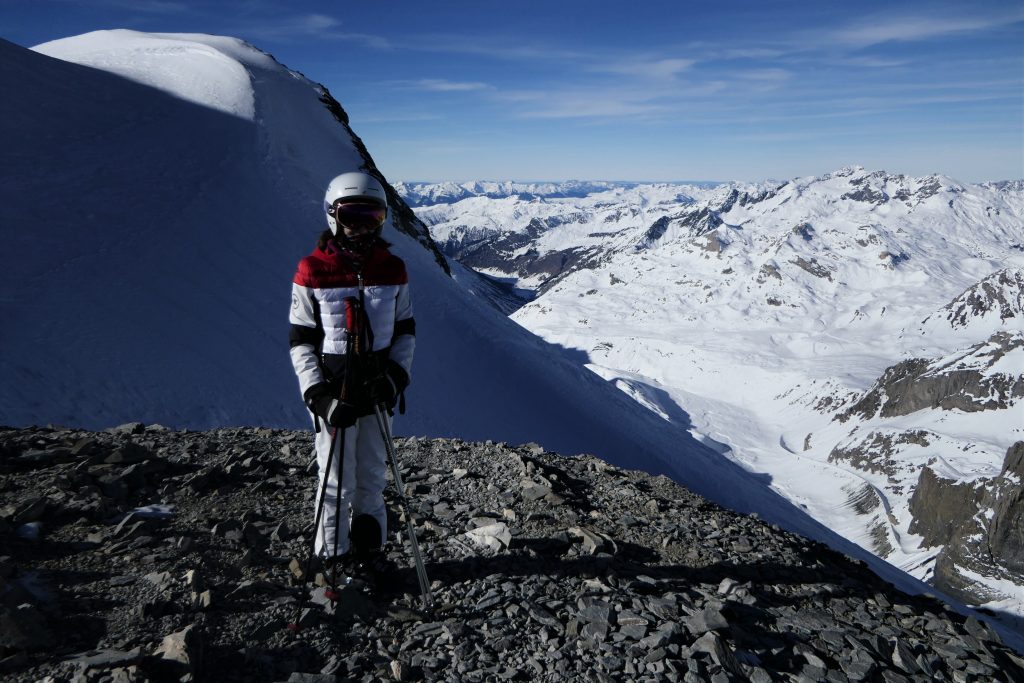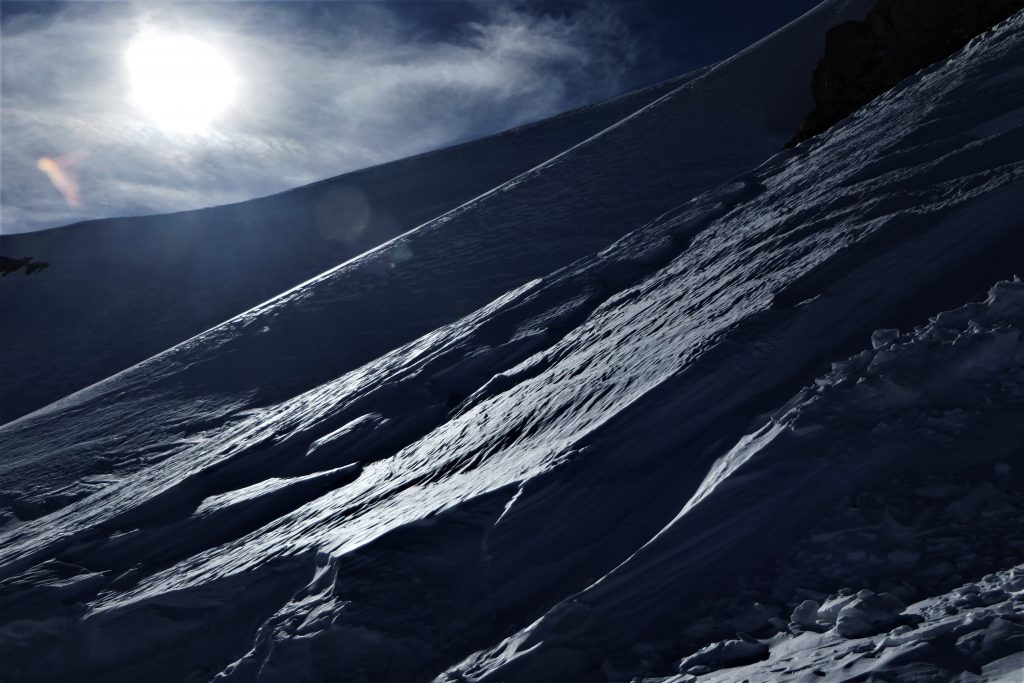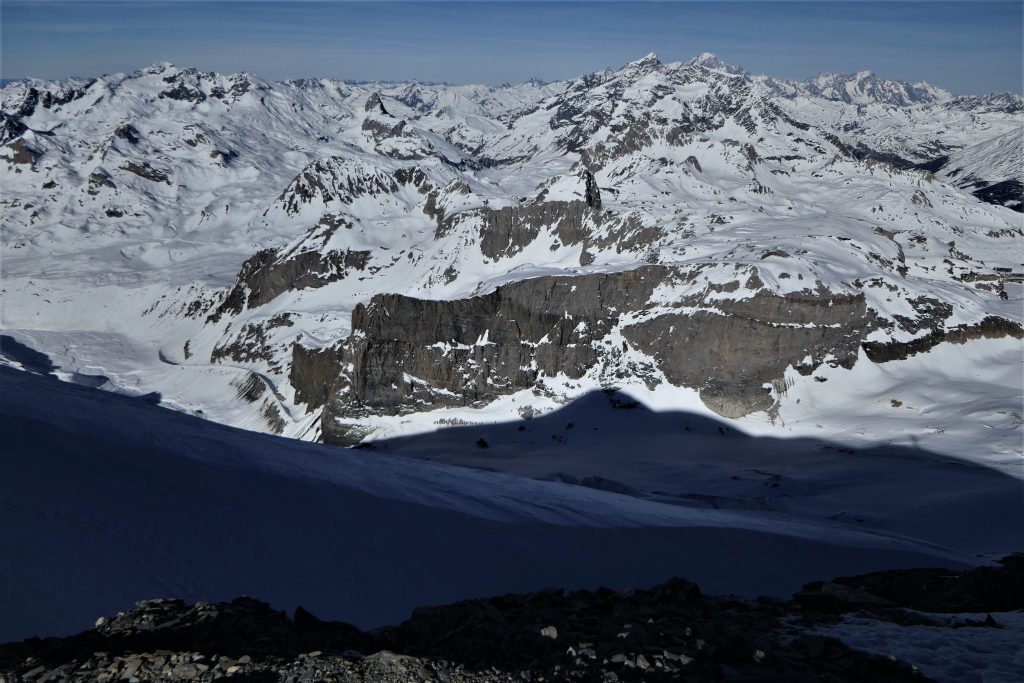Until today we had only (ever) worked within the context of braking turns. Despite most modern skis being designed and constructed for carving (accelerating turns) even World Cup racing has been forced to seriously limit this technology trend because most of the skill in skiing is built upon the braking/pivoting action. Carving however is a skill in its own right and a special quality of the ski – though not all modern skis are able to carve.
All Derin was asked to do was to start in a straight line down the hill and then move the centre of mass to one side allowing both skis to “rail” along their edges. It really is that simple at a basic level – but most people can’t do this straight away and still skid all over the place. It’s best to learn this at low speed on a very gentle gradient keeping the skis mainly pointing downhill – then to increase the steepness and also turning more across the hill – but it needs a very wide slope with not too many people on it.
Derin did amazingly well especially as she only ever skis one week per year.
Centering
Derin asked if I ever get bored with skiing. My answer was “no”! Also I never get bored cycling.
When you are in a stunning natural environment with fresh air and sunshine you can’t really ask for more than that – other than the healthy body and mind necessary to appreciate it. Engaging the mind on your effort or internally (centred) on your actions simply becomes a “moving meditation”. Teaching is also a great challenge and part of skiing itself. Racing can become a powerful addiction and off piste skiing never stops being fascinating and a real joy.
When the fundamentals of skiing are in place (as they already are for you) – then you can ski off piste as if by magic. We went in some soft off piste today and you didn’t have to change anything in your skiing – even with short racing skis.



What makes Glacier ice blue? (Yes it’s oxygen – same reason the sky and clear water are blue)
Quote: “Snow is white because full spectrum, or white, light is scattered and reflected at the boundary between ice and air. The white colour of bubbles at the top of a dark beer work the same way—small pockets of air reflect and scatter visible light. Ice only appears blue when it is sufficiently consolidated that bubbles do not interfere with the passage of light. Without the scattering effect of air bubbles, light can penetrate ice undisturbed. In ice, the absorption of light at the red end of the spectrum is six times greater than at the blue end. Thus the deeper light energy travels, the more photons from the red end of the spectrum it loses along the way. Two meters into the glacier, most of the reds are dead. A lack of reflected red wavelengths produces the colour blue in the human eye.”


